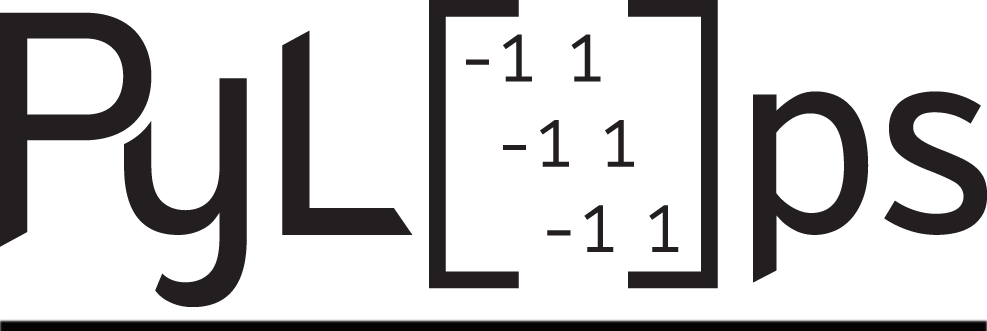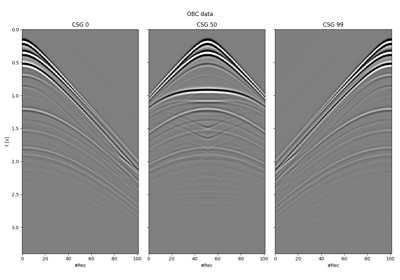pylops.waveeqprocessing.BlendingGroup#
- pylops.waveeqprocessing.BlendingGroup(nt, nr, ns, dt, times, group_size, n_groups, nproc=1, dtype='float64', name='B')[source]#
Group blending operator
Blend seismic shot gathers in group blending mode based on pre-defined sequence of firing times. In group blending a number of spatially closed sources are fired in a short interval. These sources belong to one group. The next group of sources is fired after all the data of the previous group has been recorded. The size of input model vector must be \(n_s \times n_r \times n_t\), whilst the size of the data vector is \(n_{groups} \times n_r \times n_{t,tot}\).
- Parameters
- nt
int Number of time samples
- nr
int Number of receivers
- ns
int Number of sources. Equal to group_size x n_groups
- dt
float Time sampling in seconds
- times
np.ndarray Absolute ignition times for each source. This should have dimensions \(n_{groups} \times group_{size}\), where each row contains the firing times for every group.
- group_size
int The number of sources per group
- n_groups
int The number of groups
- nproc
int, optional Number of processors used when applying operator
- dtype
str, optional Operator dtype
- name
str, optional Name of operator (to be used by
pylops.utils.describe.describe)
- nt
- Returns
- Bop
pylops.LinearOperator Blending operator
- Bop
Notes
Simultaneous shooting or blending is the process of acquiring seismic data firing consecutive sources at short time intervals (shorter than the time requires for all significant waves to come back from the Earth interior).
Group blending refers to an acquisition scenario where two or more sources are towed behind a single vessel and fired at short time differences. The same experiment is repeated \(n_{groups}\) times to create \(n_{groups}\) blended recordings. For the case of 2 sources and an overall number of \(N=n_{groups}*group_{size}\) shots, the modelling operator is
\[\begin{split}\Phi = \begin{bmatrix} \Phi_1 & \Phi_2 & \mathbf{0} & \mathbf{0} & ... & \mathbf{0} & \mathbf{0} \\ \mathbf{0} & \mathbf{0} & \Phi_3 & \Phi_4 & ... & \mathbf{0} & \mathbf{0} \\ ... & ... & ... & ... & ... & ... & ... \\ \mathbf{0} & \mathbf{0} & \mathbf{0} & \mathbf{0} & ... & \Phi_{N-1} & \Phi_{N} \end{bmatrix}\end{split}\]where each \(\Phi_i\) operator applies a time-shift equal to the absolute ignition time provided in the variable
times.

